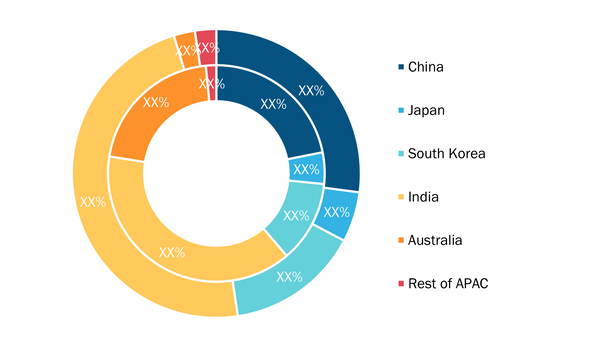
Published On: Mar 2022

Published On: Mar 2022

According to a new market research study on “Asia Pacific Robot End-Effector Market to 2028 – COVID-19 Impact and Regional Analysis and Forecast – by Type, Application, Industry and Country,” is expected to reach US$ 5,055.60 million by 2028 from US$ 1,671.84 million in 2021. The market is estimated to grow at a CAGR of 17.1% from 2021 to 2028. The report provides trends prevailing in the Asia Pacific robot end-effector market along with the drivers and restraints pertaining to the market growth. Expansion of industrial robotics and incrementing adoption of cobots are major factors driving the growth of the Asia Pacific robot end-effector market. However, requirement of huge capital for initial deployment of robot end-effectors may hinder the growth of Asia Pacific robot end-effector market.
Asia Pacific is characterized by a large number of developing countries, a positive economic outlook, high industrial presence, huge population, and rising disposable income. All these factors make APAC a major growth driving region for various markets, including robot end-effector. The lockdown of various factories in China affects the Asia Pacific supply chains and negatively impacts manufacturing, delivery schedules, and various products and services. Even as the factories in China are beginning to reopen, several logistics businesses have reduced or hit pause on their operations; thus, some cargo terminals shut down due to low volume. In the healthcare sector, robots witnessed a slight growth during the pandemic. For instance, HCARD, a robotic device, helped frontline healthcare workers to maintain physical distance from those infected by COVID-19 in India.
The market for Asia Pacific robot end-effector is segmented into type, application, industry and country. Based on type, the market is segmented into welding guns, clamps, grippers, suction cups, tool changers, and others. In 2020, the grippers segment held the largest share in Asia Pacific robot end-effector market. Based on application, the Asia Pacific robot end-effector market is divided into handling, assembly, welding, processing, dispensing, and others. The welding segment is expected to be the fastest growing segment over the forecast period. Based on industry, the market is segmented into automotive, metals and machinery, electrical and electronics, food and beverages, and others. In 2020, the automotive segment held the largest share in Asia Pacific robot end-effector market. Based on country, the Asia Pacific robot end-effector market is segmented into China, Japan, South Korea, India, Australia and rest of Asia Pacific. In 2020, China held the largest share in Asia Pacific robot end-effector market. Furthermore, in this present scenario of COVID 19 pandemic, the Asia Pacific robot end-effector market has been facing difficulties and several countries have suffered heavily. The manufacturing sectors in the Asia Pacific countries have been experiencing low production and a weak supply chain. Thereby, impacting the market for robot end-effector.
ABB Ltd.; Destaco (Dover Corporation); Festo SE & Co. KG; J. Schmalz GmbH; Kuka AG; Piab AB; Robotiq Inc.; Schunk GmbH & Co. KG and Zimmer Group are some of the leading companies in the Asia Pacific robot end-effector market. The companies are focused on adopting organic growth strategies such as product launches and expansions to sustain their position in the dynamic market.
Asia Pacific Robot End-Effector Market, By Country, 2020 and 2028 (%)
Contact Us
Phone: +16467917070
Email Id: sales@businessmarketinsights.com